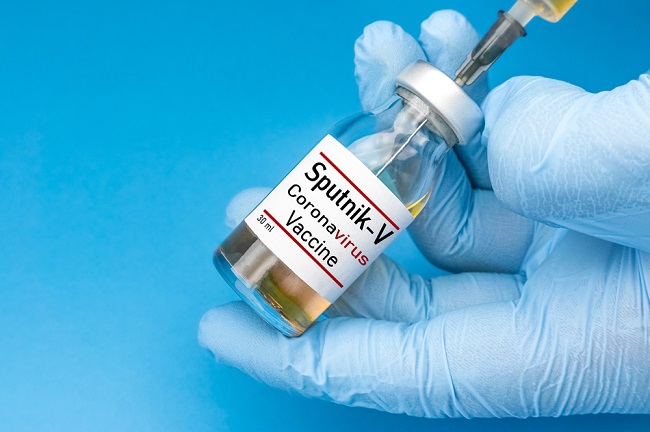Like the rest of the body, the brain is also susceptible to bleeding, infection, and other forms of damage. Damage or function change on the brain sometimes need surgical procedure. Craniotomy is one of the procedures that can be performed.
Craniotomy is a brain surgery process that is done by opening the skull bone to correct the disorder that occurs. Craniotomy is not a minor operation, so you need to know some important information about this surgery before undergoing it.

Diseases That Can Be Treated With Craniotomy
You will be given the option of having a craniotomy if you have any of the following conditions:
- Head injurySevere head injury is a life-threatening condition that requires immediate treatment in a hospital. The doctor will examine the symptoms that arise to determine the severity. This condition can be accompanied by injury to brain tissue, or bleeding in the brain, requiring a craniotomy.
- Perbrain bloodIn conditions of cerebral hemorrhage, a craniotomy may be performed to treat the bleeding and remove blood clots.
- strokeIn stroke with bleeding in the cavity of the head, craniotomy surgery can be performed to stop and treat the bleeding.
- Aneurysm brainThe process of craniotomy in brain aneurysms, can help prevent the rupture of blood vessels in the brain, and as a treatment if there has been bleeding due to rupture of an aneurysm.
- Brain tumorIn brain tumors, this operation is needed as a step to remove the tumor that causes impaired brain function.
- brain abscessCraniotomy is needed in brain abscesses, when other methods of treatment have not been successful, to help drain pus from the abscess or source of infection.
- hydrocephalusHydrocephalus occurs due to a buildup of fluid in the cavities (ventricles) in the brain. This excess fluid increases the size of the ventricles and puts pressure on the brain. A craniotomy is performed to help reduce the pressure.
- ParkinsonIn Parkinson's disease, a craniotomy is needed to implant a stimulant to help improve body movement in people with Parkinson's.
- EpilepsyMore than 50 percent of epilepsy has no known cause, while the rest are caused by diseases that cause disorders in the brain and require craniotomy surgery.
Understanding the Stages of Craniotomy Surgery
There are three stages in craniotomy surgery, namely preoperative, surgical process, and postoperative. Especially at the postoperative stage, patients are expected to follow the doctor's instructions.
- PreoperativeIf your condition requires a craniotomy, The first thing you will do is do a CT scan to see the location of the part of your brain that requires a craniotomy procedure. At this stage, nerve function tests will also be carried out and will be asked to fast for 8 hours. Make sure you have provided information on current medications, as well as any history of allergies you have.
- Process ocleanIn the operation process, a craniotomy will begin by slashing the layer of the scalp which is then clamped and pulled to clarify the condition inside. Then the skull bones will be drilled. After the section is complete, the skull bone will be cut using a special saw. The next step, the bone is removed and the doctor begins to access the part of the brain that needs to be treated. Once the opening of the skull bone has been completed, the part of the brain that has suffered damage or problems will be repaired, or even removed. When the procedure is complete, the bones and scalp will be reattached using stitches, wire, or staples surgery. However, if you have a tumor on the skull or high cranial pressure, then closure of the bone may not be immediate.
- PostocleanPostoperatively, the doctor will monitor your condition and do several things, such as asking you to lie down with your head higher than your feet, to prevent swelling of your head and face. Once stable, you will be trained to inhale deeply to restore lung function. The doctor will also perform an examination and provide therapy for the nervous system. And before you go home, the doctor will teach you some ways to keep the surgical wound area clean.
During recovery, you will need plenty of rest for a few weeks until your energy is restored. You also need to pay close attention to the activities you are doing. Do not drive a vehicle or lift heavy weights to prevent strain on the incision site. Wait until the doctor allows you to do these things.
Operation Risk Craniotomy
Similar to other surgeries, craniotomy also has risks during the operation and postoperatively. Various risks of complications that may occur in craniotomy surgery, including:
- Infection
- Bleeding or blood clots
- Brain swells
- Pneumonia
- Seizures
- Unstable blood pressure
- Muscle weakness
- Loss of consciousness
In addition, if after craniotomy you experience several things, such as seizures, difficulty speaking, weak arms or legs, decreased vision, body fever or chills, bleeding or festering wounds after surgery, consult a doctor immediately for treatment. right.
The decision to perform a craniotomy procedure should be made with caution. Ask for as much explanation as possible from the neurosurgeon, so that you are better prepared to undergo a craniotomy and the risks that may occur.









